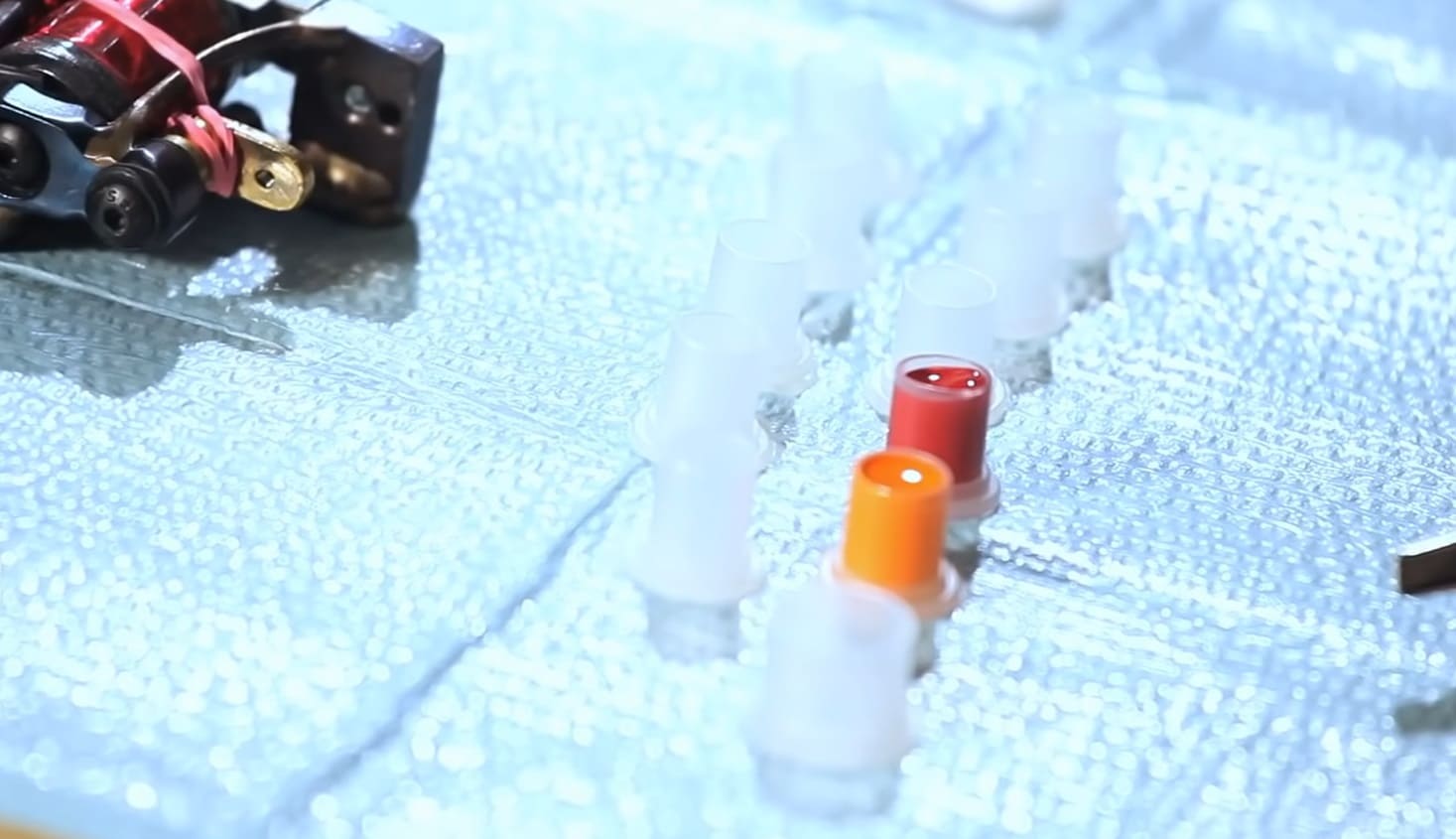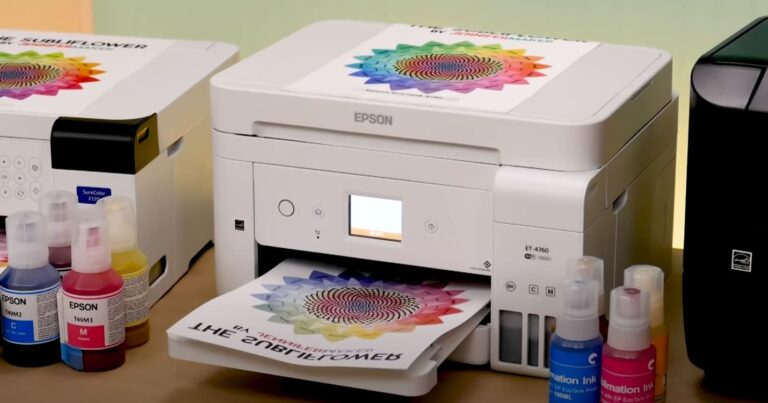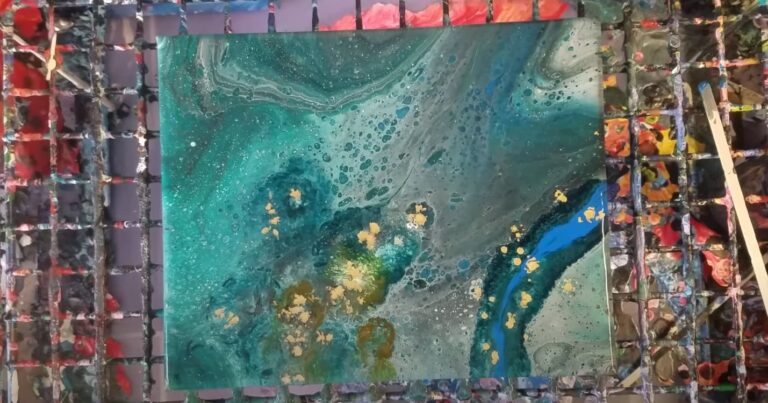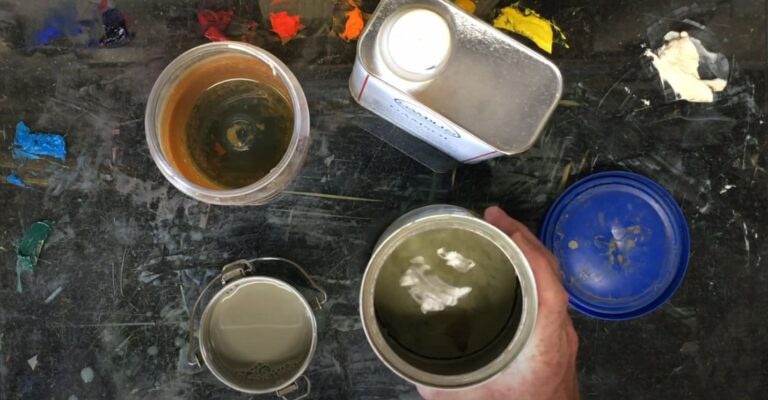Can You Mix Tattoo Ink Colors?
Tattoo ink is used by people for a variety of reasons. The most common reason is to permanently decorate and personalize their bodies with artwork, symbols, or words that have significant meaning to them. Some people use tattoos as a form of self-expression, while others may use them to mark a significant life event or milestone, such as the birth of a child or the loss of a loved one.
Tattoo ink is also used as a way to express cultural or religious identity. For example, traditional Maori tattoos, or “ta moko” are used by indigenous Maori people in New Zealand to signify their identity and heritage. Similarly, in Japan, tattoos have a long history and are often associated with the Yakuza or other criminal organizations.
In addition to personal expression, tattoo ink is also used in the medical field. For example, medical tattoos are used to mark the location of a tumor or radiation treatment area, or to identify a patient’s blood type or medical condition in case of an emergency.
Overall, the use of tattoo ink is a personal decision and can serve many different purposes depending on the individual’s cultural, emotional, or personal needs.
So, Is It Okay to Mix Tattoo Ink Colors?
Yes, tattoo ink colors can be mixed to create custom shades and hues. Professional tattoo artists often mix different colors to create unique and customized designs for their clients. Mixing tattoo ink colors can be done by hand, using a palette and sterile tools, or by using a tattoo ink mixer machine.
It is important to note that not all tattoo ink colors are compatible and safe to mix. Certain colors may react with each other and cause a chemical reaction, resulting in a color that is different than intended or even potentially harmful. Professional tattoo artists are trained to know which colors can be safely mixed and in what proportions to achieve the desired effect.

Additionally, it is important to use sterile tools and equipment when mixing tattoo ink colors to prevent the risk of infection or cross-contamination. Only professional tattoo artists with proper training and certification should attempt to mix tattoo ink colors.
Composition Of Tattoo Ink
The composition of tattoo ink can vary depending on the brand and type of ink, but it typically contains a combination of the following ingredients:
- Pigments: These are the colorants that give the ink its color. They are usually made from metal salts or organic compounds.
- Carriers: These are liquids that help to suspend the pigments and ensure they can be delivered into the skin. Common carrier liquids used in tattoo ink include water, alcohol, glycerin, and propylene glycol.
- Stabilizers: These are added to help prevent the pigments from separating or settling in the ink bottle. They can also help to prolong the shelf life of the ink. Stabilizers may include substances such as surfactants, binding agents, or preservatives.
- Thickeners: Some tattoo inks may contain thickeners to give them a more viscous consistency. These can include substances like glycerin, xanthan gum, or silicone.
- Additives: Depending on the intended use of the ink, other additives may be included in the composition. For example, some inks may contain anti-bacterial agents or UV inhibitors to protect the tattoo and skin from damage.
It is important to note that tattoo ink is not regulated by the FDA and there is no standardization in the industry. Therefore, the exact composition of tattoo ink can vary widely between different brands and manufacturers, and the safety of certain ingredients may be unclear. It is always recommended to use high-quality, professional-grade tattoo ink and to follow proper tattoo hygiene practices to minimize the risk of adverse reactions or infections.
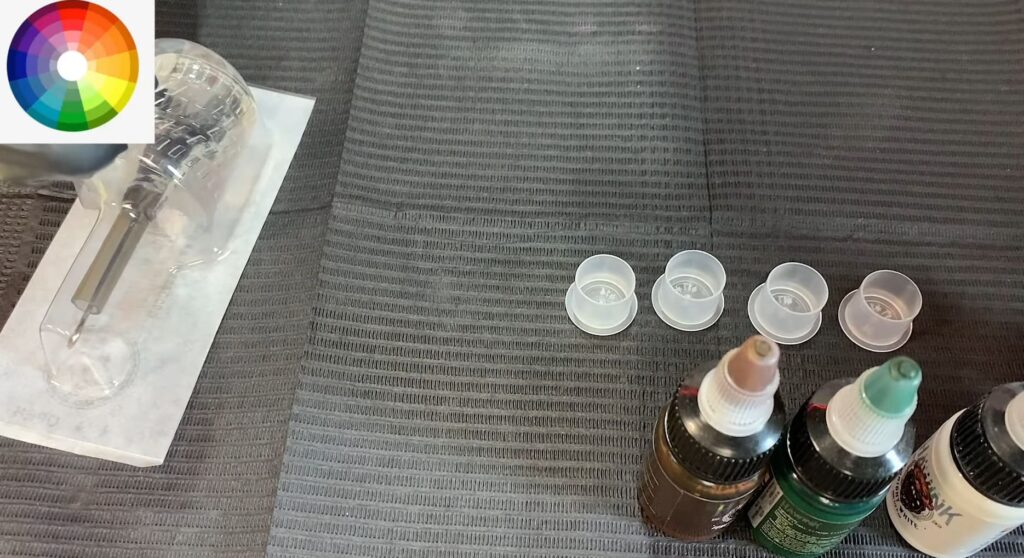
What You Shouldn’t Mix Tattoo Ink With
Tattoo ink should not be mixed with non-sterile or non-approved materials, as this can increase the risk of infection, allergic reactions, or other adverse effects. Some specific things that should not be mixed with tattoo ink include:
- Water from an unknown source: Using tap water or water from an unknown source to dilute or mix tattoo ink can introduce bacteria, fungi, or other harmful microorganisms into the ink, which can cause infection or other health issues.
- Food coloring or other non-tattoo pigments: Using non-approved pigments or dyes, such as food coloring or craft paints, can be toxic and may cause allergic reactions, scarring, or other complications.
- Ink from other sources: Mixing different brands or types of tattoo ink can result in unexpected chemical reactions, changes in color, or other undesirable effects.
- Chemicals or solvents: Adding chemicals or solvents to tattoo ink, such as bleach or rubbing alcohol, can damage the skin, cause irritation or burns, or alter the properties of the ink in unpredictable ways.
It is important to follow proper tattoo hygiene practices, including using sterile equipment and approved tattoo ink, to minimize the risk of adverse reactions or complications. Professional tattoo artists are trained to use safe, high-quality tattoo ink and to avoid mixing it with any non-approved materials or substances.
What Kinds Of Tattoo Ink There Are
There are several different types of tattoo ink available, each with its own unique properties and characteristics. Some of the most common types of tattoo ink include:
- Carbon-based ink: This is the most common type of tattoo ink and is made from a carbon-based pigment. It is known for its long-lasting color and ability to create bold, black lines.
- Organic ink: Organic tattoo ink is made from natural ingredients, such as plant-based pigments or vegetable dyes. This type of ink is generally considered to be safer and less likely to cause allergic reactions than other types of ink.
- Acrylic ink: Acrylic tattoo ink is made from a synthetic polymer that is water-resistant and durable. It is often used for tattoos that will be exposed to water, such as on the hands or feet.
- Alcohol-based ink: Alcohol-based tattoo ink is made with alcohol as the carrier liquid, which helps to create a fast-drying ink that is easy to apply. However, alcohol-based ink can be more irritating to the skin and may cause more scarring than other types of ink.
- UV-reactive ink: UV-reactive tattoo ink is a type of ink that glows under black light. It is often used for tattoos that are meant to be seen in low-light environments, such as nightclubs or music festivals.
- White ink: White tattoo ink is a type of ink that is used to create highlights and other effects in tattoo designs. It is not recommended for use as a primary color, as it can be difficult to see on lighter skin tones.
It is important to note that not all tattoo ink is created equal, and the quality and safety of tattoo ink can vary widely depending on the manufacturer and ingredients used. It is always recommended to use high-quality, professional-grade tattoo ink and to follow proper tattoo hygiene practices to minimize the risk of adverse reactions or infections.
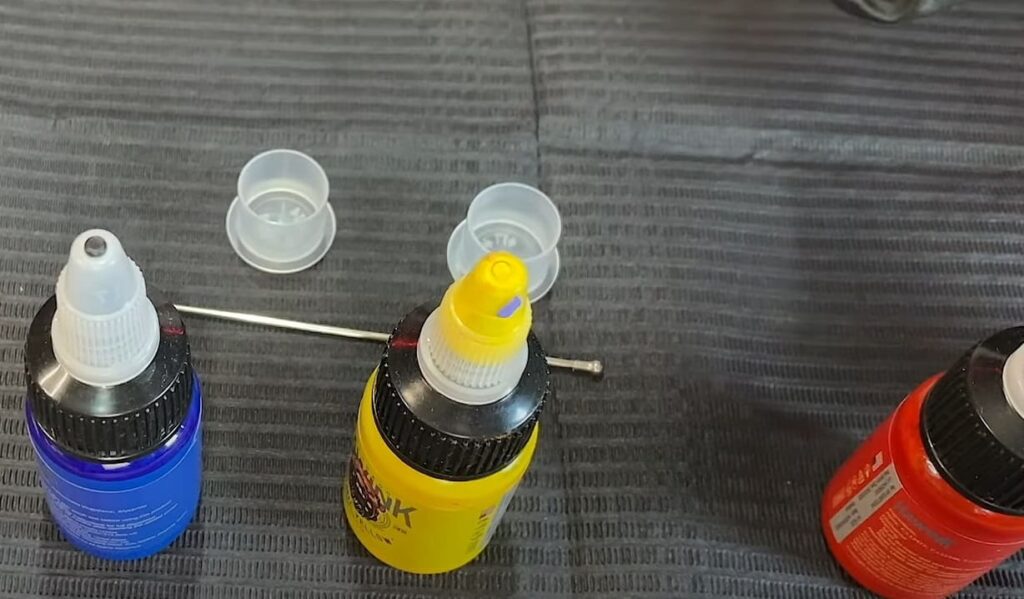
History Of Tattoo Ink
The history of tattoo ink dates back thousands of years and has evolved over time alongside the art of tattooing. Here is a brief overview of the history of tattoo ink:
- Ancient times: The earliest known evidence of tattooing dates back to around 3300 BC in the region that is now known as modern-day Europe. These tattoos were made with soot or ash and were used for decorative and ritualistic purposes.
- Middle Ages: During the Middle Ages, tattoos fell out of favor in many cultures and were often associated with criminals, outcasts, and other marginalized groups. Tattoo ink during this time was often made from charcoal, crushed insects, or other natural pigments.
- 19th century: In the 19th century, tattooing experienced a revival in popularity, particularly among sailors and other seafaring individuals. Tattoo ink during this time was often made from India ink, which was a type of carbon-based pigment.
- 20th century: In the early 20th century, tattoo ink was typically made from a mixture of water, carbon black, and other pigments. In the 1940s and 1950s, a new type of tattoo ink was developed that used acrylic resin as a carrier liquid, which helped to improve the durability and water resistance of the ink.
- Modern times: Today, tattoo ink is made from a variety of different ingredients, including pigments made from metal salts or organic compounds, carriers like water or alcohol, and stabilizers and thickeners to improve the ink’s consistency and shelf life. There is also a wide range of colors and styles of tattoo ink available, including UV-reactive ink and organic ink made from natural ingredients.
It is important to note that the safety and quality of tattoo ink has become a major concern in recent years, as some ingredients used in tattoo ink have been linked to health problems and adverse reactions. As a result, many tattoo ink manufacturers now produce high-quality, professional-grade ink that is formulated to be safe and long-lasting.
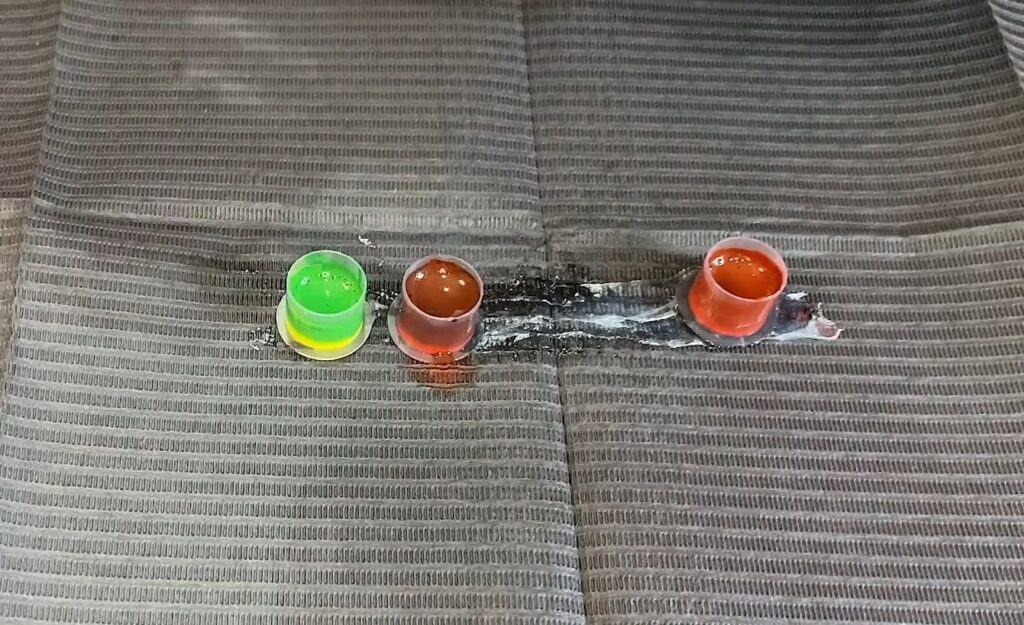
Who Was The First To Use Ink For Tattoos
It is difficult to say with certainty who was the first to use ink for tattoos, as the practice of tattooing dates back thousands of years and was developed independently in many different cultures around the world.
However, some of the earliest evidence of tattooing comes from the region that is now known as modern-day Europe. Ötzi the Iceman, a well-preserved mummy from around 3300 BC, was found to have several tattoos on his body that were made with soot or ash.
Tattooing was also practiced in many other cultures throughout history, including in ancient Egypt, China, Japan, Polynesia, and the Americas. In these cultures, tattoo ink was often made from natural pigments, such as crushed minerals or plant-based dyes.
While the exact origin of tattoo ink is unclear, it is clear that the practice of tattooing has a long and rich history that spans many different cultures and time periods. Today, tattoo ink is made using a wide range of ingredients and techniques, and the art of tattooing continues to evolve and grow in popularity around the world.
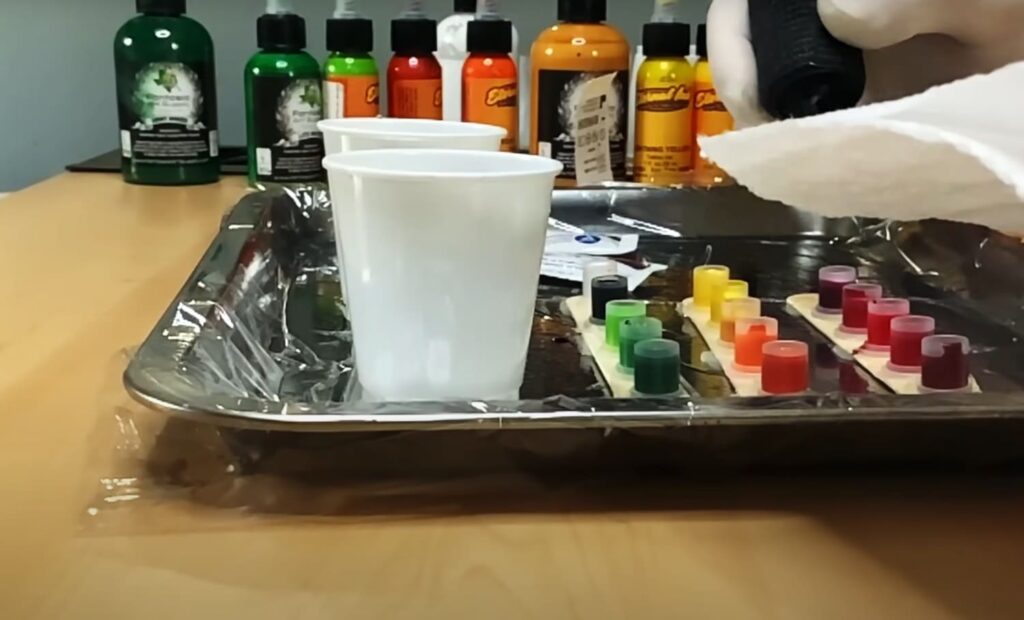
FAQ
What is the best tattoo ink for me to mix?
I cannot provide personalized recommendations for tattoo ink mixing. However, I can offer some general guidelines for selecting tattoo ink to mix:
- Use high-quality, professional-grade ink from a reputable manufacturer to ensure the safety and longevity of your tattoo.
- Choose colors that are complementary or create a pleasing contrast when mixed together. For example, blue and orange, or purple and yellow.
- Keep in mind that some colors may not mix well and may result in a muddy or unappealing color. For example, mixing red and green may result in a brownish color.
- Test your ink mixing on a small patch of skin before committing to a larger tattoo, to ensure that you like the color and consistency of the ink.
- Consider the intended placement of the tattoo and how the ink colors will look against the skin tone in that area.
Remember, mixing tattoo ink requires skill and experience, so it is always best to consult with a professional tattoo artist who has experience with ink mixing and can offer guidance and recommendations based on your specific needs and preferences.
What do I need to know before getting a tattoo?
Getting a tattoo is a big decision and should not be taken lightly. Before getting a tattoo, here are some important things you should know:
- Think about the design: Take the time to choose a design that you truly love and that has personal meaning to you. Consider the size, placement, and style of the tattoo.
- Research the artist: Look for an experienced and reputable tattoo artist who has a portfolio of work that you admire. Read reviews and ask for recommendations from friends or family.
- Consider the pain: Tattoos can be painful, and some areas of the body are more sensitive than others. Be prepared for some discomfort during the tattooing process.
- Think about aftercare: Proper aftercare is essential for the healing process and to ensure that your tattoo looks its best. Your tattoo artist will provide instructions on how to care for your tattoo after it is done.
- Be aware of the risks: While tattoos are generally safe when done by a professional, there are some risks involved, such as infection or allergic reactions. Make sure you understand these risks before getting a tattoo.
- Check local regulations: Tattooing is regulated differently in different parts of the world, so make sure you understand any local regulations or laws before getting a tattoo.
- Think about the long-term: Remember that a tattoo is a permanent addition to your body, so make sure you are truly committed to the design and are prepared to live with it for the rest of your life.
By taking the time to think through these important factors, you can make an informed decision about whether getting a tattoo is right for you and what design and artist you want to choose.
What contribution has tattoo ink made to society?
Tattoo ink has made several contributions to society throughout history. Here are a few examples:
- Cultural and artistic expression: Tattoos have been used as a form of cultural and artistic expression for thousands of years. In many cultures, tattoos are deeply symbolic and represent important cultural or spiritual beliefs. Today, tattoos continue to be a popular form of self-expression, allowing people to showcase their individuality and personal style.
- Medical and scientific research: Tattoo ink has been used in medical and scientific research to help better understand how the skin and immune system respond to foreign substances. For example, tattoo ink has been used in studies on how the body breaks down and eliminates foreign particles.
- Fashion and cosmetics: Tattoo ink has inspired the development of new cosmetics and fashion trends. For example, temporary tattoos and semi-permanent makeup use ink and pigments that are similar to those used in tattoos.
- Industry and commerce: The popularity of tattoos has led to the growth of a thriving tattoo industry, including tattoo shops, conventions, and supply companies. This industry generates jobs and revenue for many people around the world.
Overall, tattoo ink has had a significant impact on culture, art, science, fashion, and commerce. While tattoos are still sometimes stigmatized or misunderstood, they have become an increasingly mainstream form of self-expression and have contributed to the rich tapestry of human culture throughout history.
Related Video: How to Set Up Your Tattoo Palette | Tattoo Artist
Conclusion
Tattoo ink has proven to be a useful and versatile substance that has contributed to society in many ways. Beyond its primary use in creating permanent body art, tattoo ink has been used in medical and scientific research, inspired new trends in fashion and cosmetics, and created a thriving industry that supports many people around the world. Additionally, tattoos are a form of cultural and artistic expression that have been used for thousands of years to convey deep personal and cultural meanings. While tattoos may not be for everyone, the use of tattoo ink has undoubtedly enriched our world in many ways, and its impact will continue to be felt in the years to come.

